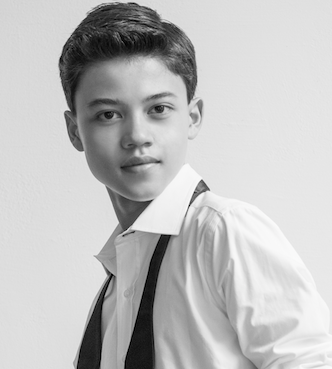Pianist Jasper Heymann in Review
Jasper Heymann, piano
Steinway Hall, New York, NY
October 29, 2016
Underground at the new Steinway emporium on Sixth Avenue and 43rd Street in New York City. is a small performance space, seating only a few more than sixty. Sure, it lacks the charm of the old rotunda on 57th Street, but time marches on. The seats are comfortable but the temperature is very warm. A water cooler located outside the hall looked promising, but no cups were provided.
It was there that an extraordinary full recital was presented by fourteen-year-old Jasper Heymann. I’m going to try my best not to make his age an issue. His pianism would be the envy of anyone two, three, even four times his age. My comments therefore will be just as they would be for any seasoned professional. He needs no apologia.
Mr. Heymann possesses the single most important ingredient (assuming talent, of course) in the musician’s arsenal: a deep, emotional bond with the music and the ability to convey that at the instrument. It can’t be taught. All the technicalities can be taught, and I’m not saying that he’s a “perfect” pianist—that would be hyperbole, but he did melt the sometimes severe heart of this reviewer as the afternoon progressed.
The first half of his program was “structural” and classic: Bach and Beethoven. (Though Beethoven’s Op. 31 No. 2, nicknamed “The Tempest” is quite “dangerously” romantic.) These weren’t his absolute strengths, although he displayed a beautiful ear for big color in the Bach Sinfonia from the second Partita. Hooray for the modern piano in Bach! And the second movement of the Beethoven displayed quite a bit of maturity that perhaps I didn’t think would be there. The outer movements were appropriately “stormy” and the sonata overall was convincing. He should be learning to do repeats in sonata-form movements. Perhaps he was conserving energy for the virtuosic second half. I really don’t wish to pick out details. What one heard was the sense of intense involvement.
After intermission, he favored us with several Schumann works: the delicious Op. 1 “ABEGG” variations, written in “code” fashion on the last name of one of Schumann’s pre-Clara girlfriends. This glittering showpiece was dispatched with clarity and grace, especially in the initial presentation of the theme: charm! (I was puzzled as to why he didn’t do the “funny” presentation of the theme near the end that occurs when the notes are released one by one, rather than sounded.) Then Heymann played the first two of the Op. 12 Fantasiestücke: Des Abends (Evening) and Aufschwung (Soaring). Des Abends possessed a beautiful hush, though it moved at quite a clip. Aufschwung had all the energy of youth. (I did miss the canonic imitation in the major-key contrasting middle theme. See, I can get picky.)
Then Mr. Heymann turned his attention and gifts to two Liszt works: the third concert etude “Un Sospiro” and the Soirée de Vienne No. 6 (based on Schubert waltzes). His Un Sospiro verged on the mystical. It was simply magnificent. I’m so proud of him for playing the short internal cadenza (one of three provided by Liszt) and the whole-tone ending. The colors and phrase expansion were masterful. The virtuoso waltz piece was also a marvel of clarity and charm (hard to do both) amid the welter of fast notes. He had flair to burn.
He played two well-deserved encores: Rachmaninoff’s gorgeous Elegy in E-flat minor, Op. 3 No. 1, inspired by the death of fellow-composer Arensky. This was, no hyperbole, perfection, astounding in its lyricism and sorrow. He finished with Fazil Say’s perky jazz romp on the famous Paganini Caprice that has inspired so many classical composers. Mr. Heymann was obviously enjoying himself, and so were we. I do hope he’ll be able to “forget” this trifle when the time comes to learn the Brahms Op. 35 Paganini variations and/or the Rachmaninoff Rhapsody on a Theme of Paganini.
Fazil Say was a Young Concert Artists winner. If Mr. Heymann continues on his course, he could well be too, soon.

